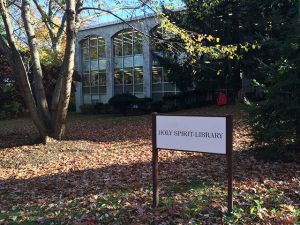Most college students share one major concern. Money.
Such is the case for students such as sophomore Vanessa Charlot who was originally given work study but had it taken out of her financial aid package.

“I feel as though they’re giving [work study allocations] away to all the freshmen because they accepted so many freshmen and my friend, for instance, had a work study allocation and she really needs work study [because she has a son] but they gave hers away,” Charlot said.
The work study program is a federal program that allows schools a certain allocation of funds every year to be distributed in financial aid packages to the neediest students who filled out FAFSA.
The large size of this year’s first-year student class has raised concerns for upperclassmen all year in regards to Cabrini’s resources and put a strain on Residence Life as they tried to find rooms for students earlier in the year. An increase in size is not completely negative though.
“Eventually that’ll be a good thing that’ll lead to the college getting more funding that we can distribute,” Betsy Gingerich, director of financial aid, said. “It’s just strictly because our federal allocation has gone down so we just have to be really careful how we distribute it to the students.”
While Charlot was able to find a job at the RAC that allows her to work on campus for convenience, there are still students struggling with the complexity and downfalls of the program. If a student does not use a work study one year, it makes it more likely that the following year it will be offered in a different students package. If the student does use the work study allocation, however, it is very likely that the work study will be renewed the following year.
This is why some students who are offered work study one year but do not take advantage of the package or are unable to work a work study job find in the following year that even though their financial situation might not have changed work study is removed from their financial aid package.

They have trouble getting an on campus job when they are ready or able to work.
“I’m stuck with nothing. It is awful. I do live on campus and it’s just harder [to go off campus] because I play basketball and it takes up a lot of time,” sophomore Tayler Holmes said. “It’s really time consuming to have a job off campus and scheduling with school and stuff.”
There are over 400 students that received work study as part of their financial aid this year, but there are only 242 students participating in the program. Holmes expressed that she is friends with a number of freshmen that have work study and are not using it, but she is still having trouble finding a job on campus.
With a five-year-old son at home, this puts added stress on Holmes who is a student, athlete and mother. Although her parents help her take care of her son, not being able to work on campus puts a strain on Holmes’ ability to do things.
“It’s just little things that I’ll just have to go without because that money goes to [her son] more, it goes to home stuff,” Holmes said.
Holmes and Charlot are not the only students struggling to find jobs on campus or that have been cut from the program due to not using it at first. Although this process is helpful to other students seeking the aid of the programit hurts those who, for various reasons, could not use it in the past but can or need to have a job in following years.
“We used to have a wait list [for work study] but our resources are limited this year that we don’t have it. It is unfortunate,” Gingerich said.
@Samjacobspa



